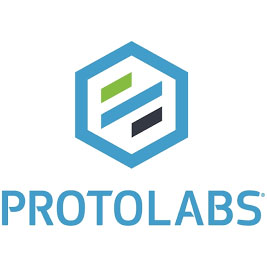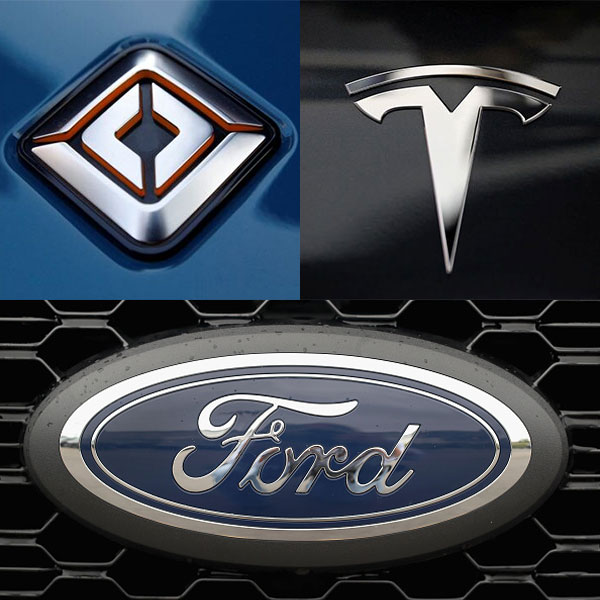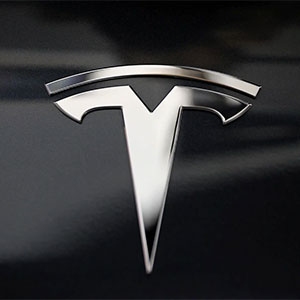BLOG
Why Zero Trust is Gaining Traction
 By Jonathan Rowe, Research Analyst
By Jonathan Rowe, Research Analyst
Cyber breaches come in all shapes and sizes, and no organization is immune – including the United States military. On April 13th 2023, Jack Teixeira, a 21 year old Airman in the 102nd Intelligence Wing of the Massachusetts Air National Guard on Cape Cod, was arrested by the FBI at his parents’ home in Dighton, Massachusetts. Teixeira was charged with two crimes: violating the Espionage Act of 1917 by retaining and transmitting national defense information without authorization; and unauthorized removal of classified information. Specifically, Teixeira allegedly obtained classified information and uploaded it to an online Discord chat group known as “Thug Shaker Central” which is believed to have held 20-to-50 members.
This classified information was posted in the form of transcripts Teixeira read aloud, copied notes, and included screenshots of classified documents. These classified documents included highly sensitive details, such as the United States’ plans for potential scenarios in the Russian war on Ukraine, names of informants and spies, military strategy, and other data that US prosecutors allege would have been of “tremendous value to hostile nation states”. The leak is thought to be the most significant security breach in the United States since over 700,000 sensitive materials were published on WikiLeaks in 2010.
The Teixeira incident sparked an inside review of the military’s approach to cybersecurity. On December 11th, the Air Force disciplined 15 members of its ranks relating to the Teixeira incident. This discipline spanned from personnel being removed from their positions – including command positions – to non-judicial punishments. Furthermore, Air Force personnel close to Teixeira knew about up to four separate occasions of him exhibiting questionable behavior prior to the leaks, and a small number of people “intentionally failed to report the full details of these security concerns/incidents.”
Even before the Air Force’s disciplinary action was publicized in December, what quickly became apparent after the breach was that Teixeira, himself, had little need to possess access to classified information. Moreover, he essentially worked in the IT department of the National Guard, but not with or related to the sensitive information in the systems with which he worked. Although focused on IT issues, technically his role was as a member of cyber defense operations. This highlighted an overall security flaw in the US military, where it is commonplace for low-level personnel, including technology workers, to have access to classified information.
The incident prompted the Air Force to conduct “a security-focused stand down to reassess [its] security posture and procedures, validate the need to know for each person’s access, and emphasize to all Airmen and Guardians the responsibility [they] are entrusted with to safeguard this information and to enforce and improve our security requirements.”
The Teixeira incident and the Air Force’s subsequent review of its security requirements invokes the concept of zero-trust security that is growing in popularity across organizations of all sectors. Zero-trust security is the idea that companies need to be on guard for external cyberthreats, in addition to having robust internal security policies and arrangements. In large organizations like the Air Force, there are a plethora of people with potential access to sensitive information. With a zero-trust security stance, organizations consider how to assign and prioritize security clearance to their own employees; in organizations with a zero-trust security model, employees are granted access to critical information only on a need-to-know basis. While organizations generally trust their employees, they must operate under the assumption that they cannot trust their most important information with anyone and everyone within a company. Following the Jack Teixeira episode and the Air Force’s related internal review, it is likely that the Air Force will adopt a zero-trust security clearance model within its own ranks, ensuring that vital information does not fall into the wrong hands again in the future.
The Cure for EV Range Anxiety Is Coming

By Ben Z. Rose
Dec 27, 2023, 2:00 am EST
 Of all the obstacles to broader adoption of electric vehicles, the lack of publicly available car chargers is the one cited most frequently. If we are to believe industry pundits, traditional car drivers are scared to death of buying an EV for fear of draining the battery and getting stuck on the side of the road of some backwoods hamlet, or worse, getting ensnared in city traffic. The fear of an empty battery has led to a condition commonly referred to as range anxiety. And it persists, despite the industry’s best efforts to treat it.
Of all the obstacles to broader adoption of electric vehicles, the lack of publicly available car chargers is the one cited most frequently. If we are to believe industry pundits, traditional car drivers are scared to death of buying an EV for fear of draining the battery and getting stuck on the side of the road of some backwoods hamlet, or worse, getting ensnared in city traffic. The fear of an empty battery has led to a condition commonly referred to as range anxiety. And it persists, despite the industry’s best efforts to treat it.
Great strides have been made to extend EV battery life in the last few years. It’s unusual today for an EV to have a charging range of less than 250 miles, with 300 miles or more increasingly common. This is farther than many cars and pickup trucks can drive on a single tank of gas. Moreover, the number of publicly available charging stations is rising, with the ratio of EVs to charging ports falling rapidly. Even fast chargers are now rising as a portion of charger infrastructure. Fast chargers are like highway gas stations for EVs—they let drivers pull in and quickly refill most of their charge.
In Massachusetts, for example, EVs make up about 1% of all registered light vehicles. The state has one fast charger for every 75 EVs, while the ratio of registered light vehicles to gasoline pumps is one to 196 (assuming 10 pumps per gas station). And more innovations are in the works: Members of AAA can now obtain roadside EV charging services in 15 cities around the U.S., including West Springfield, Mass.
Yet there remain real reasons to worry about taking an EV out on a road trip. First of all, the number of fast chargers is greatly skewed in favor of urban, versus rural areas. Most charging stations have only one or two charging ports, and since even fast charging can take 15-45 minutes depending on the battery, lines can form quickly. That can get stressful when many charging facilities are unmanned and fully self-service. By contrast, there is hardly ever a line at the local gas station, or at a Cumberland Farms, which may have as many as 16 pumps working at once. It’s also nice to know that if you have a problem with your credit card, there’s a person on premise in the form of a cashier or attendant that can resolve it. Being able to buy a bag of peanuts, a cup of coffee, or use the restroom, is of course a bonus.
This stands in contrast to many EV chargers, which have difficulty reading a credit card. This assumes that the charger is in working order when you reach it. Far too many are not. And getting to one is not an easy feat either, especially when it’s located away from a main highway, tucked away in the back of a motel, school, or even a shopping center. Tesla drivers have it easier, with access to a more-reliable, national network. But drivers of EVs from one of the automakers also need to worry whether their EV will work with the available charger’s plug. No one ever needs to worry about whether a gasoline pump will fit into their tank.
Fortunately, help is on the way. Tesla’s clever decision to open a portion of its fast charger network (and thus defray the costs of operating it) to other manufacturers, including GM, Ford, Volvo, Mercedes-Benz, Nissan, Honda Motor, BMW, Toyota, Rivian Automotive, and several others, will help to alleviate the problem. Tesla has also made its charging standard available to charger manufacturers. This could both increase the availability and reliability of chargers, in much the same way that Microsoft’s decision to open up its Windows user interface to other software makers made it easier to write software for a larger audience.
Indeed, the time will come—perhaps only in a few years—when EV Range Anxiety can not only be treated, but cured. Until that day arrives, those still on the fence about buying an EV can focus on other pet peeves, such as the still-high unsubsidized price of most EVs, the poor performance of in-car electronics, fear of losing battery life in cold weather, and, for some models, the high cost of repairs.
Guest commentaries like this one are written by authors outside the Barron’s and MarketWatch newsroom. They reflect the perspective and opinions of the authors. Submit commentary proposals and other feedback to [email protected].
Bauhaus Meets Blade Runner: Tesla’s New Cybertruck
 Arriving in time for the end of tailgating season, the Cybertruck, with its futuristic—if controversial—angular design, will certainly be a head-turner as deliveries begin. Originally unveiled in 2019 as a bullet-proof prototype that was not bullet-proof, the Cybertruck’s unique design aesthetic is a blend of Bauhaus and Blade Runner. The sports car-like pickup truck presents myriad manufacturing and component sourcing challenges, as stainless steel is difficult to form, bend, cut and weld. It is also difficult to maintain a uniform appearance. According to an internal email written by Tesla CEO Elon Musk in August of this year, “all part dimensions need to be to the third decimal place in millimeters and tolerances need to be specified in single digit microns.” As if to downplay this lofty objective, Musk went on to write, “If LEGO and soda cans, which are very low cost, can do this, so can we.”
Arriving in time for the end of tailgating season, the Cybertruck, with its futuristic—if controversial—angular design, will certainly be a head-turner as deliveries begin. Originally unveiled in 2019 as a bullet-proof prototype that was not bullet-proof, the Cybertruck’s unique design aesthetic is a blend of Bauhaus and Blade Runner. The sports car-like pickup truck presents myriad manufacturing and component sourcing challenges, as stainless steel is difficult to form, bend, cut and weld. It is also difficult to maintain a uniform appearance. According to an internal email written by Tesla CEO Elon Musk in August of this year, “all part dimensions need to be to the third decimal place in millimeters and tolerances need to be specified in single digit microns.” As if to downplay this lofty objective, Musk went on to write, “If LEGO and soda cans, which are very low cost, can do this, so can we.”
Like the original Ford Model T, the Cybertruck is available in just one color: in this case, unpainted stainless steel. Unlike any of the full-size pickup trucks available from Ford, GM, and Stellantis, which dominate the 2.5 million unit market in the U.S., the Cybertruck is, in the words of the announcer on Monty Python, something completely different.
First off, the Cybertruck looks like something that would be lowered from the Lunar Module to collect rocks on the moon, rather than a run-of-the-mill pickup truck that will haul and tow cargo for tradesmen. It remains unclear how resistant the car body will be to dings, scratches and outright dents, but we do know that ultra-hard stainless steel is difficult to repair, treat and restore to its original finish. This makes it impractical for hauling and towing construction equipment, as well as collecting moon rocks. And yet the Cybertruck is remarkably competitive with other EV pickup trucks on the market in terms of brute strength: it boasts a maximum tow capacity of 11,000 pounds, while its 2,500 pound maximum payload is almost 50 percent greater than the Rivian R1T, and a bit more than the Ford F-150 Lightning.
An important unresolved question is whether the Cybertruck will appeal to the sub-segment of the pickup truck market that is already purchasing an electric truck. If so, the numbers are not very encouraging. Of the projected 2.46 million pickup trucks that will be purchased in the U.S. this year, less than two percent, or something like 35,000 units will be either Ford F-150 Lightning or Rivian R1Ts.
Rivian has, in fact, seen its product mix shift heavily in favor of its full-size electric SUV, while Ford has announced plans to reduce its EV pickup truck volume for 2024, while also having vowed to double the number of Ford F-150 hybrid engine vehicles it intends to sell next year. All of this suggests that there may be less enthusiasm about EVs among both traditional and non-traditional buyers of pickup trucks.
Getting down the cost curve with a reasonable price for the Cybertruck will be key for Tesla to penetrate the market. Though the first wave of users is unlikely to be tradespeople, there is no reason that subsequent waves couldn’t be, given the truck’s towing and payload capacity, which is sure to improve over time. We are sure that Cybertruck version 5.0 will be quite different from previous versions.
Put differently, the more affordable Cybertruck becomes the bigger the market. At some point, though not today, the well-defined size of the pickup truck market will become relevant when the Cybertruck can breach the $50,000 or less entry level price point. Then the Cybertruck will be able to lay claim to its five-to-ten percent or more market share of the 2.5 million unit U.S. pickup truck market, which would equate to 125,000 to 250,000 annual units or more. Now it is only a question of time.
The Tech IPO Well Has Run Dry
 About the author: Ben Rose is president of Battle Road Research, an independent equity-research firm.
About the author: Ben Rose is president of Battle Road Research, an independent equity-research firm.
After a banner year for initial public offerings of technology companies in 2021, the number of new issues dropped precipitously last year. The stock market correction of 2022 saw the largest tech stocks decline by a greater percentage than the S&P 500. The fall in investor appetite for even the most established tech stocks was a key reason for the dearth of new issues. The correction signaled an end to the era of free money, and the deep compression in valuations made it difficult for private companies to get a clear picture of their public market value. All of the tech-company IPOs of 2021 came to market having demonstrated revenue growth often exceeding 20% in the year prior to their debuts. But virtually all of the tech IPOs that we added to our Battle Road IPO Review generated losses leading up to their IPOs. Not only were the companies unable to turn a profit, virtually all recorded even greater losses over the prior year, as if the companies were being urged by their shareholders to indulge in a final feast to drive top-line growth. Many of these companies promised that after their IPO, they would embark on a steady diet of reduced operating expenses, in order to demonstrate a reasonable path to profitability.
One reason for executives and private round investors to justify the spending binge lies in the faith in the Rule of 40, which holds that any combination of revenue and earnings growth summing to 40% will be the best determinant of sustainable demand for a company’s public market valuation. In theory as well as in practice, a company could have a 20% revenue-growth rate, for instance, and operate at a substantial loss. The formula worked for several years leading up to last year’s tech stock rout. But the stress test of last year’s market correction debunked the Rule of 40. Even the fastest growing companies had their market capitalizations cut to the bone in a year of growth-stock compression.
The demand for growth stocks has undergone a sea change in the last six months. Technology behemoths Microsoft , Google , Amazon , Meta Platforms, and Salesforce , among many others, shed staff in the aftermath of an unsustainable rise in demand for their services, coupled with over-hiring during the pandemic. The decision to reduce operating expenses by companies that were already profitable is a sign that the terrain has shifted away from revenue growth at any price, to growth with a sustainable level of profitability.
Before answering the question why does profitability matter, it is worth asking whether companies with aspirations to go public in 2023 have the discipline in place to show not only top-line growth, but a pattern of steadily narrowing losses. My hunch is that many do not. The message that growth at any price will no longer cut it, is however, being learned the hard way. Many private companies have had their valuations slashed to reflect the lower valuations of their public-company peers. Indeed, venture-capital funding fell to a nine year low in the fourth quarter of 2022, The Wall Street Journal reported. Managing a business profitably will ultimately be rewarded, but the number of companies able to do so may remain limited.
Profitability matters because it demonstrates that a company has the potential, if not the power, to determine its own destiny. Conversely, operating losses are an indication that a company has yet to prove a working business model. The concern is that a company that loses money today will need to be bailed out tomorrow with future stock offerings or convertible debt, which in turn will dilute the interest of existing shareholders. It also means that a company will be unable to repurchase shares to offset equity issuance, a favored form of tech-company compensation which, if not held in check, results in shareholder dilution.
A company incapable of generating earnings today—no matter how promising its top-line growth prospects—may not yet be ready for the rough and tumble of the stock market. And if an unprofitable company does slip through the IPO window, it will likely need to be bailed out by a new round of investors, public or private. Until private companies and their financial backers realize that the terrain has shifted away from growth at any price in favor of growth along with profits—or at least a near-term path to break-even—the tech IPO well is likely to remain dry.
Protolabs: Doubling Down on Injection Molding & CNC Machining
 Rather than call out its core manufacturing services as legacy businesses, as the previous management team did in the past, Protolabs is doubling down on the value it can provide in each of its two key manufacturing services: injection molding (IM) and CNC machining. On the IM side, Protolabs is now offering seven-day turnaround time in for mold creation, down from 14 days previously. It has also vowed to compete more rigorously for business with longer lead times. This is in contrast to the past, when Protolabs focused almost exclusively on prototypes and part production runs with quick turnaround times. The company intends to use its internal factories primarily, as well as partners to optimally schedule part production.
Rather than call out its core manufacturing services as legacy businesses, as the previous management team did in the past, Protolabs is doubling down on the value it can provide in each of its two key manufacturing services: injection molding (IM) and CNC machining. On the IM side, Protolabs is now offering seven-day turnaround time in for mold creation, down from 14 days previously. It has also vowed to compete more rigorously for business with longer lead times. This is in contrast to the past, when Protolabs focused almost exclusively on prototypes and part production runs with quick turnaround times. The company intends to use its internal factories primarily, as well as partners to optimally schedule part production.
Similarly in CNC machining, formerly known as First Cut, the company has also achieved success with quick turnaround times, but will now be focused on longer lead time business, as well as leveraging its Hubs partner network to create more exotic parts that cannot be produced in house. The overwhelming majority of revenue from Hubs comes from partners with expertise in CNC machining, which enables Protolabs to offer customers a wider range of volume pricing, part tolerances, part complexity and finish options, such as nickel and black oxide plating. The new strategy also enables Protolabs to make a broader outreach to procurement and supply chain teams, in addition to its core community of product developers.
Another strategic shift for the company is more closely monitoring the profitability of each of its key segments, which include 3-D printing as well as sheet metal fabrication. 3-D printing, which contributes about 14 percent of revenue, is known to be less profitability than CNC machining and injection molding. The company operates several factories, and it is likely that the operations will be scrutinized more closely. Similarly sheet metal fabrication contributes less than five percent of revenue, and an undisclosed level of profitability.
A key advantage that Protolabs holds over digital brokers that claim to offer similar services, is that many companies prefer to deal directly with their manufacturing service provider, particularly for proprietary projects that require close manufacturing tolerances. The ability to visit Protolabs’ facilities and “kick the tires” is a key advantage for the company.
It’s Time for a Real Mustang EV
 The resounding box office success of Top Gun: Maverick, in which Tom Cruise reprises his role as fighter pilot Pete “Maverick” Mitchell, is the most recent example of America’s love of nostalgia. Despite the nearly forty year interval between the two films, diehard fans of the original Top Gun and new filmgoers alike were enticed to return to the big screen.
The resounding box office success of Top Gun: Maverick, in which Tom Cruise reprises his role as fighter pilot Pete “Maverick” Mitchell, is the most recent example of America’s love of nostalgia. Despite the nearly forty year interval between the two films, diehard fans of the original Top Gun and new filmgoers alike were enticed to return to the big screen.
The Ford Motor Company has a similar opportunity to revisit the phenomenal success of the original Mustang, a two-door sports car that sold over one million units in its first two years. Named after the World War II fighter plane, and launched at the New York World’s Fair in 1964, what came to be known as the “pony car” combined the best of European styling and American ingenuity. In the new age of EVs, Ford has launched the Mustang Mach-E SUV, which carries the Mustang moniker, but, let’s face it, in no way resembles the original.
To be sure, Ford has taken strong steps to electrify its product line, as evidenced by MotorTrend’s recent unanimous selection of the Ford F-150 Lightning as Truck of the Year for 2023. But why not create a real Mustang EV, similar in body design to the one that captured the imagination of a generation of car-buyers. An authentic looking and performing Mustang would give Ford the chance to create a “two-horse” race with Tesla, whose Model 3 is the early leader in the EV passenger car category. By doing so, Ford would be making a statement that it will not cede this all-important segment as the world shifts from combustion engines to electric motors.
Rather than compete solely on the basis of safety features and battery range, Ford could bring back the original pony interior, with its alluring three-dimensional image of horses in flight. Rivian Automotive has made a minor splash in the pickup truck world with its vegan leather interior, an obvious appeal to the environmentally conscious. With vinyl records making a comeback, Ford could bring back the original vinyl interior of the Mustang, or perhaps an engineered material which does not bake or crack in the sun? And as much as many of us enjoy the utter silence of an EV motor, Ford could embed a device that simulates the growl of the Mustang engine, an option for traditional automotive enthusiasts.
And who knows? An EV incarnation of the original Mustang might be even more successful than the original. After all, the new Top Gun: Maverick achieved a 96 percent approval rating on Rotten Tomatoes, while its predecessor tallied a mere 58 percent. So too does Ford have the opportunity to create an even more popular Mustang that would reach a wider audience in a new era of consumer transportation.
Competition Heating Up in Pickup Trucks
 Rivian established a first mover advantage in the electric pickup truck market when it launched the R1T in 2021. Having won the coveted Motor Trend Truck of the Year award for 2022, Rivian, we believe, held the market share lead in EV pickup trucks as of the end of 2022.
Rivian established a first mover advantage in the electric pickup truck market when it launched the R1T in 2021. Having won the coveted Motor Trend Truck of the Year award for 2022, Rivian, we believe, held the market share lead in EV pickup trucks as of the end of 2022.
Fresh on the heels of having won the Motor Trend Truck of the Year for 2023, Ford announced on January 5th that it has sold 15,617 F-150 Lightning trucks since the vehicle was unveiled to customers in May of last year. Ford has not so quietly been claiming that in each of the last two months it has sold more EV pickups than any other manufacturer.
By the end of Q1 2023, it is likely that Ford will pass Rivian to become the overall leader in electric pickup sales in the United States. This is not necessarily surprising, as Ford’s classic F-150 has been the best-selling truck in the United States for 46 consecutive years. Importantly, Ford offers the F-150 in multiple model variants that range in price from $40K to $90K. And Ford has many years of brand equity from which to draw. Moreover, while both Rivian and Ford are relatively inexperienced at building EVs, Ford has a demonstrated ability to produce vehicles in large volumes—something that Rivian has struggled with.
Another headwind facing Rivian is the inevitable launch of Tesla’s Cybertruck. To be clear, the Cybertruck is way behind schedule, relative to original estimates provided by Tesla, but it now appears that limited production will begin this summer. Rather than go head-to-head against Rivian and Ford in the market for conventional-looking EV pickup trucks, Tesla is taking a risk with a unique body style that is sure to electrify some, yet conceivably turn-off others. The angular, space-age body of the Cybertruck is equipped to handle any type of terrain, will supposedly feature a bullet-proof body, and will be manufactured with a unique mix of light-weight aluminum and ultra-hard 30x cold-rolled stainless steel.
From what we can gather, fly-over drone footage available over the Internet of Tesla’s Gigafactory in Texas revealed the recent delivery of at least part of a 9,000-ton Giga Press, which will be used to cast aluminum parts in the first production run. Elon Musk has said the Cybertruck, when available, will be the car he drives to work in Austin. The Cybertruck has the potential to put a freeze on the electric pickup truck market, as consumers will be curious to learn more about it before purchasing a rival vehicle. This is especially true for prospective Rivian buyers who desire an elite luxury pickup truck. While a case can be made that the R1T and Cybertruck may ultimately appeal to different buyers, it is likely that consumers who are interested in the R1T would also consider the Cybertruck for similar reasons. Could this be part of the reason why Rivian stopped disclosing its backlog?
Pure Storage: Bringing Sustainability To Data Storage
 Firms of all sizes from every industry need a system to store and manage their data. To do this, organizations require powerful solutions and technologies. Unsurprisingly, these powerful data storage solutions consume vast amounts of energy, thus having an adverse impact on the environment. As a pioneer in all-flash data storage – data storage infrastructure that only includes flash memory drives rather than spinning disk drives – Pure Storage’s systems mitigate the toll on the environment from all of these data storage endeavors. With sustainability becoming increasingly important to companies, investors, and global citizens, Pure Storage is emphasizing and enhancing the environmental benefits of its data storage solutions over alternatives.
Firms of all sizes from every industry need a system to store and manage their data. To do this, organizations require powerful solutions and technologies. Unsurprisingly, these powerful data storage solutions consume vast amounts of energy, thus having an adverse impact on the environment. As a pioneer in all-flash data storage – data storage infrastructure that only includes flash memory drives rather than spinning disk drives – Pure Storage’s systems mitigate the toll on the environment from all of these data storage endeavors. With sustainability becoming increasingly important to companies, investors, and global citizens, Pure Storage is emphasizing and enhancing the environmental benefits of its data storage solutions over alternatives.
On January 17th, Pure Storage announced that it is now offering an enhanced Evergreen//One Energy Efficiency service level agreement (SLA) that guarantees energy efficiency for firms of all sizes. This new SLA is the first and only guarantee of energy efficiency in the enterprise storage-as-a-service market. The SLA allows companies to measure the energy usage of their data storage systems in Watts per tebibyte. If firms’ maximum Watts per tebibyte thresholds are passed, Pure Storage is committed to providing them with service credits and will undertake remediation actions at no cost. We note that this SLA fully aligns with Pure Storage’s mission to provide organizations with the most sustainable storage solutions.
This new SLA continues Pure Storage’s commitment to offering highly sustainable data storage products that contribute significant environmental benefits over alternative storage systems. Beyond the new SLA, Pure Storage offers the densest and most efficient flash modules on the market, enabling firms to leverage better data storage features at a lower power output and cost than from the company’s rivals. Pure Storage notes that its all-flash storage solutions operate up to 80 percent more efficiently than competing all-flash products. As Pure Storage develops its products with an evergreen architecture – so they do not grow obsolete or have to be replaced – the company can mitigate energy waste by extending the lifespan of its hardware and delivering non-disruptive over-the-air updates. We note that 97 percent of Pure Storage’s products are still in use six-years after they are purchased. Pure Storage is able to provide more effective data storage with less power output and physical equipment, enabling organizations to limit their environmental impacts and costs.
With more and more importance placed on sustainability and the environment, combined with the need for organizations of all kinds to store and manage their data, it is crucial for firms to be able to operate data storage solutions that are not detrimental to the planet. Pure Storage is capitalizing on this, as the company’s all-flash data storage systems are the most environmentally friendly on the market. As firms both large and small view the impact of their decision-making on the health of the planet, Pure Storage has leaned into its ethos, and stands to benefit from rising customer adoption.
Tesla Implements Overdue Price Cuts
 Rather than fight it out with the U.S. government over whether a standard Model Y is a cross-over or an SUV, which would make it ineligible for the $7,500 federal tax incentive, Tesla recently enacted over-due price cuts on the Model Y, as well as its entire product line. With a 31 percent price reduction on a base level Model Y (inclusive of the tax credit) Tesla is now better positioned to retain its leading market share of EV sales in the U.S., which currently stands at 65 percent.
Rather than fight it out with the U.S. government over whether a standard Model Y is a cross-over or an SUV, which would make it ineligible for the $7,500 federal tax incentive, Tesla recently enacted over-due price cuts on the Model Y, as well as its entire product line. With a 31 percent price reduction on a base level Model Y (inclusive of the tax credit) Tesla is now better positioned to retain its leading market share of EV sales in the U.S., which currently stands at 65 percent.
The move recognizes the unsustainable 30 percent-plus rise in Tesla’s list prices over the last two years brought about by supply chain bottlenecks and component shortages coming out of the global pandemic. Rather than rely on Tesla’s generous pricing umbrella, competitors will have to follow suit. The next battleground will be the composition of battery materials and critical minerals thresholds required to qualify for the full federal credit.
At the start of the New Year, Tesla’s core EV models, the Model 3 sedan and Model Y small SUV, became eligible for a U.S. federal income tax credit for the first time in over two years.
The most important price cut was on the base-level Model Y, which was reduced from $65,990 to $52,990—a 20 percent reduction. When factoring in the $7,500 federal tax credit, the price cut amounts to a 31 percent reduction in price. At its new price point, the base level Model Y for the first time fits comfortably within the $55,000 cap for passenger cars and cross-overs.
Over the last two years, Tesla Model 3 prices rose by over 30 percent, as component shortages and supply chain bottlenecks drove prices higher both during and immediately following the end of the pandemic in the U.S. These price increases were unsustainable, and inconsistent with growing the EV market further. The new Model Y price opens up an entirely new segment of buyers unable to afford a $66,000 car, and makes Tesla’s pricing more consistent with the intent of the Inflation Reduction Act, whose goal was to stimulate demand for non-carbon emitting vehicles, while making EVs more affordable. The previous federal tax credit had income limits, and some lawmakers complained that it subsidized EV purchases only by the wealthy. With a $125,000 single tax payer, $150,000 head of household, and $300,000 joint household income limit, the new tax credit opens up the market to a new demographic that may not have considered an EV purchase previously.
It will be interesting to see whether Tesla will be able to keep up with demand. The Model Y and Model 3 together account for about 65 percent of the EV market in the U.S. At the end of 2022, Tesla was just getting started in the ramp-up of its Austin Texas factory, which was said to be producing about 12,000 Model Ys per month. In Austin, production is limited to the Model Y. The ramping of production means that Tesla will achieve greater scale economies as time progresses, particularly as component shortages and supply chain bottlenecks continue to improve.
Dropbox: Moving from File Sync to Content Management
 With trailing twelve month sales of $1.9 billion, a market cap of $8.4 billion, $1.2 billion in cash, and zero bank debt, Dropbox (NASDAQ: DBX) is a leading provider of cloud-based file synchronization, backup, and content management software. Founded in 2007, the inspiration for the company came from CEO Drew Houston, who, as an M.I.T. student, began to conceive of an easier way to backup and share files.
With trailing twelve month sales of $1.9 billion, a market cap of $8.4 billion, $1.2 billion in cash, and zero bank debt, Dropbox (NASDAQ: DBX) is a leading provider of cloud-based file synchronization, backup, and content management software. Founded in 2007, the inspiration for the company came from CEO Drew Houston, who, as an M.I.T. student, began to conceive of an easier way to backup and share files.
Originally conceived as a way to conduct cloud-based file sync and backup—essentially replacing the need for a flash drive—Dropbox has evolved into a cloud-based content management software company, with subscription and monthly use plans for consumers, and businesses, which range in size from freelancers to the Fortune 100.
Since its inception Dropbox has deployed a bottoms-up freemium sales model, in which users typically sign up for a free service plan, and migrate over time to a paid plan, through either an annual subscription—greater than 50 percent of the time—or a monthly plan. Dropbox’s content management software plans range from free to more than $240 per year, depending on the level of functionality and customer support selected. The company’s unique freemium model has enabled it to reach and serve over 600 million registered users in 180 countries, who manage over 550 billion pieces of content.
At the end of Q3 2020, the company had 15.3 million paid users generating average revenue of nearly $128 per year, as compared to last year, when it had 14 million paid users, who generated an average $123. Roughly 12 million, or 80 percent of the company’s 15 million paid users use Dropbox for work purposes.
Dropbox does not break out revenue by vertical industry, however some of the more popular ones include technology, media and advertising, as well as construction. Other popular verticals include colleges and universities, manufacturing firms, consumer and retail, and financial services. As a content management tool, Dropbox is used by virtually all functional groups, including sales, marketing, product, design, engineering, finance, legal, and human resources.
Paying users as a percentage of the registered total is just three percent as of the most recent quarter. Dropbox believes that as many as 350 million, or roughly 60 percent of its non-paying, registered installed base of 585 million are high value targets, meaning that they exhibit many of the same characteristics as its installed base. By virtue of their existing registration, the company has created a large funnel from which to draw future paid subscribers. It can also reach and sign up prospective users at a fraction of the cost of many enterprise software companies that rely primarily on a direct sales force.
Over the last several years, Dropbox has expanded from a focus on consumers to small, mid-sized, and large businesses and non-profits, including colleges and universities. The company’s software is well-suited to workgroups of all sizes, which must collaborate across multiple functional areas and geographies. The company has been assisted by the growing trend to remote work, as stay-at-home orders mandated by governments, corporations, and non-profits, in the U.S. and abroad, in the wake of COVID-19, has increased the pace with which knowledge workers must collaborate regardless of their physical location.
Dropbox, whose revenues have grown from $1.1 billion in 2017, the year before it came public, to roughly $1.9 billion this year, has grown organically, with the assistance of only a few tuck-in acquisitions along the way. As Dropbox shifts its emphasis from consumer file sync and share to content management for businesses of all sizes, many greenfield opportunities lie ahead.







